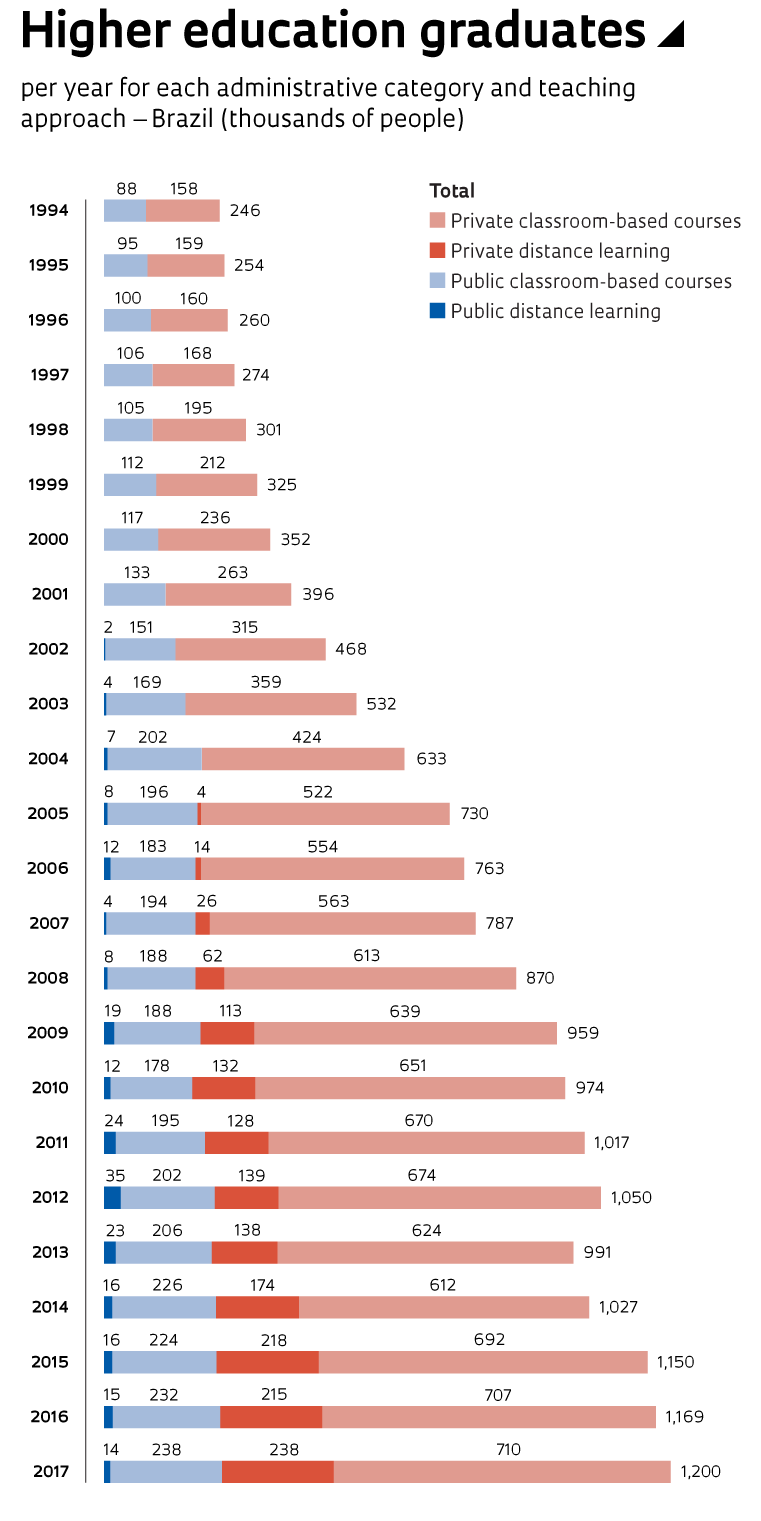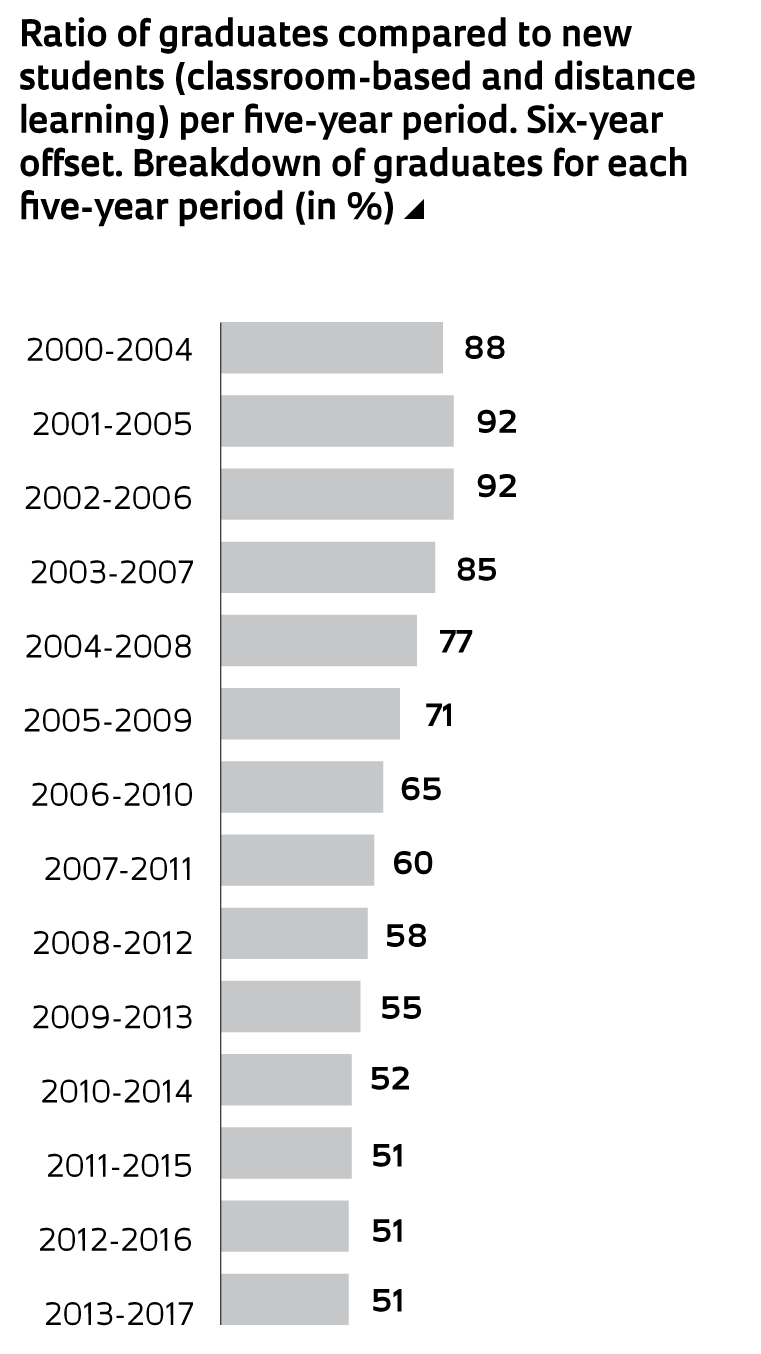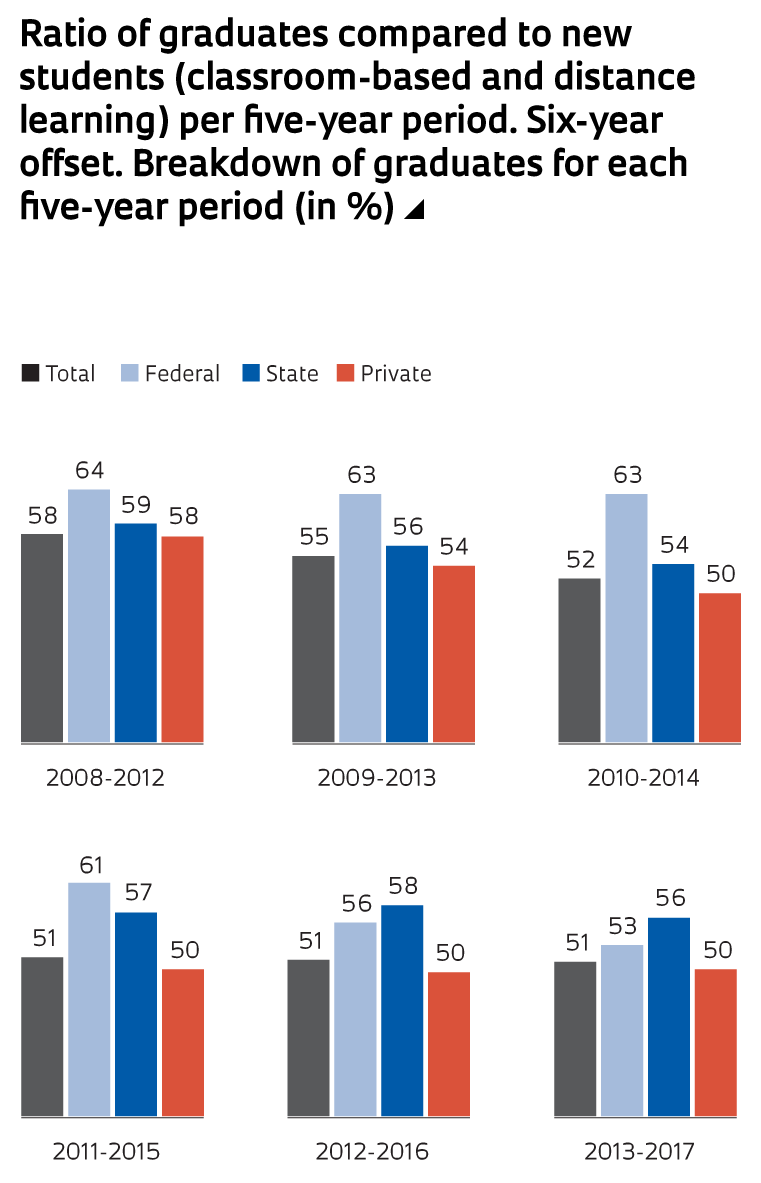DATA
Distance learning grows in popularity while graduation rates remain low
In 2017, 3,226,249 people enrolled on undergraduate courses in Brazil, an increase of 8.1% over 2016. The number of students starting new courses each year grew by 596% between 1994 and 2017. The increase was 269% at public institutions and 769% in the private sector. Distance learning exceeded one million new students, accounting for 1/3 of all admissions in 2017 and 37% of private sector enrolments.
The number of students completing undergraduate courses grew by 2.6% from 2016 to 2017, with 1,199,769 people graduating in the year. The increase between 1994 and 2017 was 388%, with 187% in public institutions and 500% in the private sector. Distance learning accounted for 21% of total graduates and 25% in the private sector.
The number of students graduating did not increase at the same rate as the number of new admissions. The graph on the right shows the percentage of students graduating in a five-year period compared to the number of new entrants in the same period, based on the prior six years1. This indicator has dropped significantly, suggesting that the number of dropouts is rising: from above 80% prior to the 2004–2008 group, to just over 50% of those due to graduate from 2010 onward.
In the most recent period, the reduced graduation rate occurred mainly in federal and private institutions. The former fell from 64% in 2008–2012 to 53% in 2013–2017, while the latter dropped from 58% to 50%. At state institutions, the rate remained at around 56% across the entire period.



